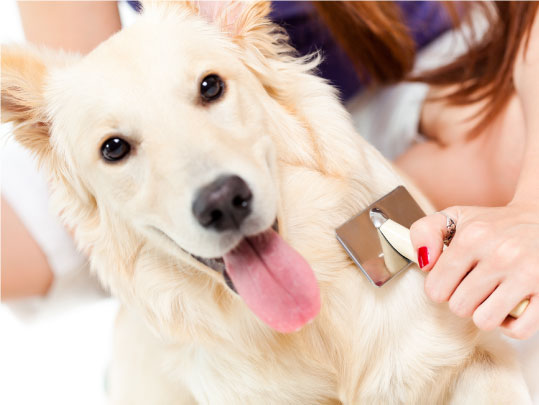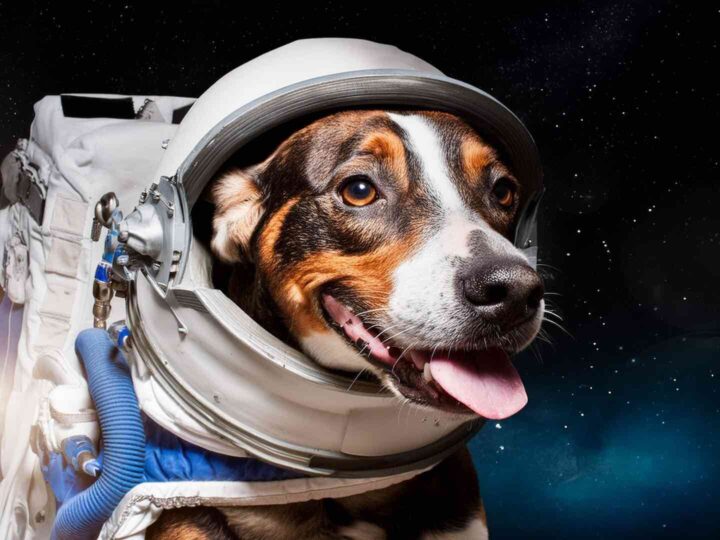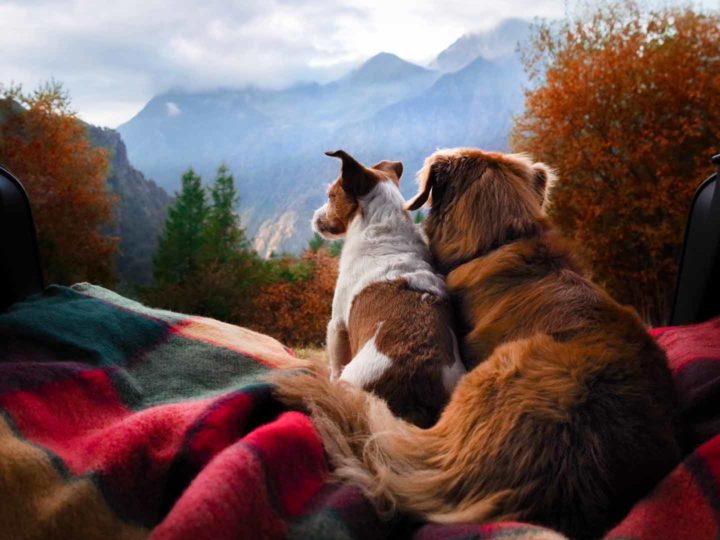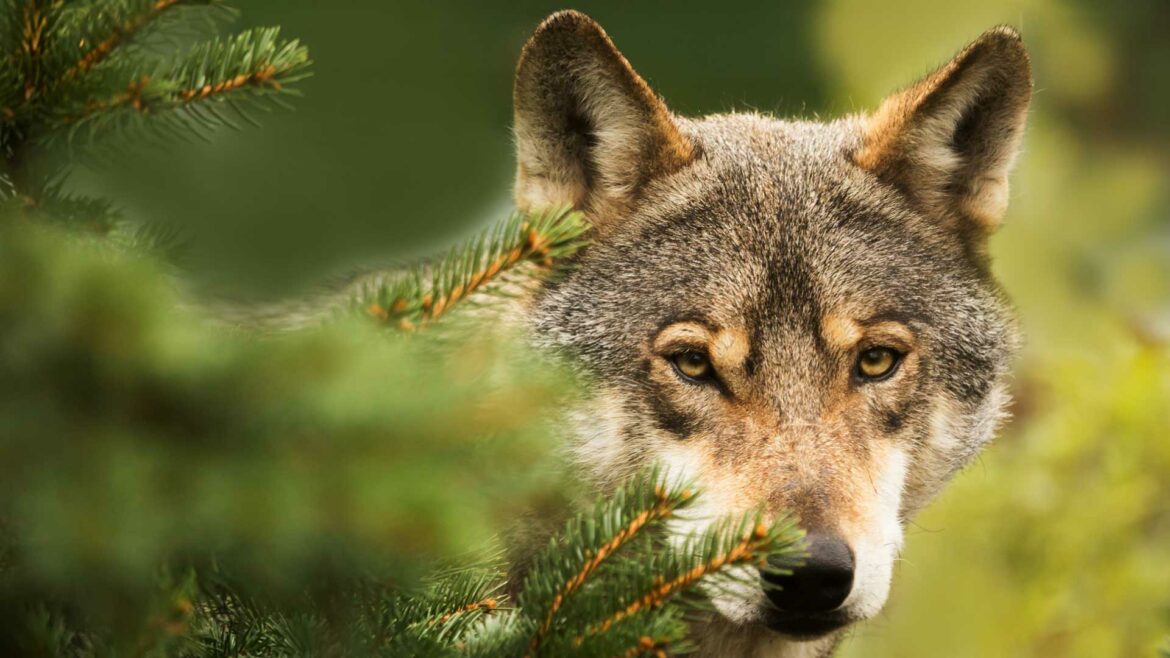
The relationship between dog and human is much more than just a cohabitation.
It is a unique bond, which every day brings serenity and mutual emotional growth. Dogs, in fact, through their unconditional loyalty, non-verbal communication that is worth more than a thousand words and their emotional support have been able to win the title of man’s best friend.
But have our fur-riends always been by humans’ side? When did they start to approach and feel safe near us?
As some of you will already know, the dog evolved from a wild animal: the wolf. So, get ready for a time travel of a few thousand years and let’s discover together the origin of our four-legged friends!
A journey through history to discover the dog
The origin of this timeless friendship between man and wolf remains not entirely clear today, but we will try to get an idea by following the stages that have defined the various hypotheses about the history and evolution of the dog.
Scholars, in order to be able to hypothesize the origins of the dog, started by examining all those belonging to the genus “canis” that is wolf, coyote, jackal and dingo. The domestic dog, called “canis familiaris” is closely related to wolves, jackals and coyotes, sharing the same number of chromosomes. On this basis, Charles Darwin started to work and in the IXX Century, he hypothesized that the different members of the canis genus played an important role in the evolution of the domestic dog.
More recently, in 1954, Konrad Lorenz published the book “Man Meets Dog” where both physical and behavioral aspects are analyzed, assuming that some breeds descended from wolves and others from jackals, in particular the golden jackal (Canis Aureus). In 1975 Konrad Lorenz revised his earlier theory, stating that dogs exclusively descended from wolves.
In 1997, thanks to Robert Wayne and his studies with the University of California, we have the first scientific evidence that dogs are descended from wolves. Thanks to a DNA comparison it was shown that the dog was the result of a wolf domestication process.
Now we can ask ourselves a further question: how did this domestication process happen?
The most reliable hypothesis is suggested by the spouses Raymond and Lorna Coppinger, who in their book “Dogs: A New Understanding of Canine Origin, Behavior and Evolution” hypothesized that, between 18,000 and 30,000 years ago, in a period of food shortage, wolves began to leave their safe areas of the woods (by the way, did you know that International Day of Forests is celebrated on 21 March?) in order to approach the nomadic tribes with the purpose of finding food, by consuming food waste left nearby by humans. Other schools of thought confirm the approach of wolves for the search for food, assuming, however, that the first wild specimens to attempt a different survival approach were the weakest members of the pack who were distanced from the pack to keep the group strong and solid against the dangers of nature.
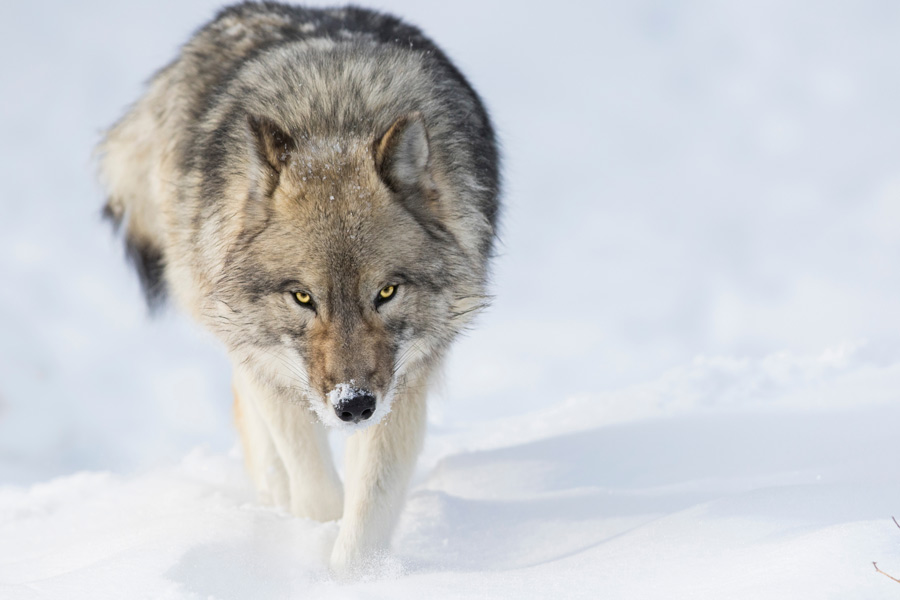
A wolf and his wild soul challenging the cold of winter.
This initial approach, precisely originated from survival needs, would thus be transformed over time into an increasingly important relationship, fed by mutual benefits for both species: canine and human. In fact, when man understood that these powerful animals could be of great help in daily life (protecting families from other wild animals, supporting herding etc.) a mutual help “agreeement” was established, a sort of symbiosis in which both species worked together, one for the other, taking advantage from their own characteristics and uniqueness. In fact, the wolves who stayed with humans were thus able to enjoy easier nourishment, guaranteeing themselves greater life and procreation. In the course of time dogs have been able to give trust to humans and to collaborate to various activities useful for human life.
Domestication process actually turned out to be prolonged, gradual and the duration of this transformation is visible even from the bones. Thanks to a study conducted by the University of Aberdeen, it was possible to compare the skeletons of wolves and dogs, pointing out for example how the dorsal vertebrae of dogs were flattened – perhaps due to the weights placed on their backs.
The result of this evolutionary process is the dog as we know him today, or almost.
In fact, the genetic heritage of our four-legged friends was inherited for clear reasons from the wolf, but over the years humans have learnt to select precise characteristics in dogs, creating many different breeds suitable for specific tasks, from the more operational ones (such as sheep dogs) to those purely aesthetic.
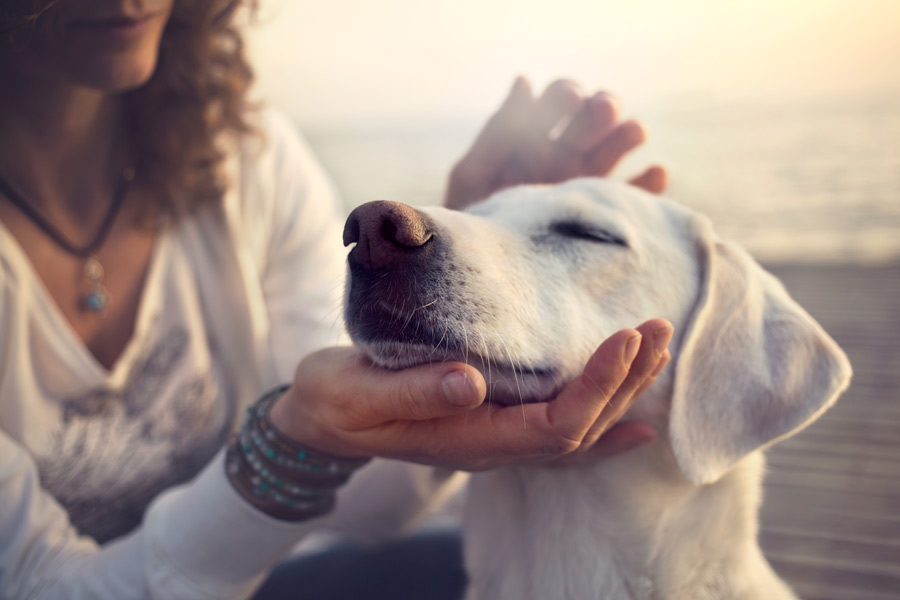
Here is the result of dog domestication: lots of affection and mutual love!
Dog and wolf: relatives, but how much?
The close contact between the two species is therefore undeniable.
Wolves are the ancestors of dogs, and they passed down their characteristics to our fur babies, which are still evident today. Despite this, we cannot ignore the fact that today the nature of the two specimens is completely different: on one side the wolf, who maintains his original characteristics of a wild animal, on the other side the dog who, besides particular features selected by humans, he has become accustomed to a more comfortable and safer lifestyle.
But then can we still say that there are similarities between dogs and wolves? Or are they two completely different species nowadays?
There are few points in common today and the main reason is certainly the different habitat to which they belong. Wolves are more in contact with nature, for example, they’re daily exposed to conditions that for some breeds would be truly difficult to face (heat, cold, snow, wind and rain) they make daily reality truly complex to live and deal with. Another difference is the wolf’s need to find food by himself, a behavior which, although innate in the dog’s instinct, is not demonstrated by our fur-riends.

This Beagle definitely prefers sofas to forests!
Another significant aspect is the so-called risk of hybridization between wolves and dogs.
It can rarely happen that unvaccinated stray dogs come into contact with packs of wolves when the latter approach populated areas during their long journeys.
This aspect is negative for two reasons:
- it increases the risk for the wolf of incurring different diseases to which he is not accustomed, destabilizing him physically and jeopardizing the balance and stability of the pack;
- it causes a partial loss of the original genetic identity of the wolf, generating dangerous changes for the survival attitudes of wild canids.
This is why the separation of the two animal species is so important!
Dog and wolf: affinities and differences
Although many dog breeds apparently have nothing to do with wolves on an aesthetic level, some characteristics are in common. For example?
- Pack life: both dogs and wolves are social animals. They tend to live and carry out their daily activities in groups or herds. In the case of the dog, the group to which he belongs is his family, composed of other canine specimens, but also – or above all – of us humans;
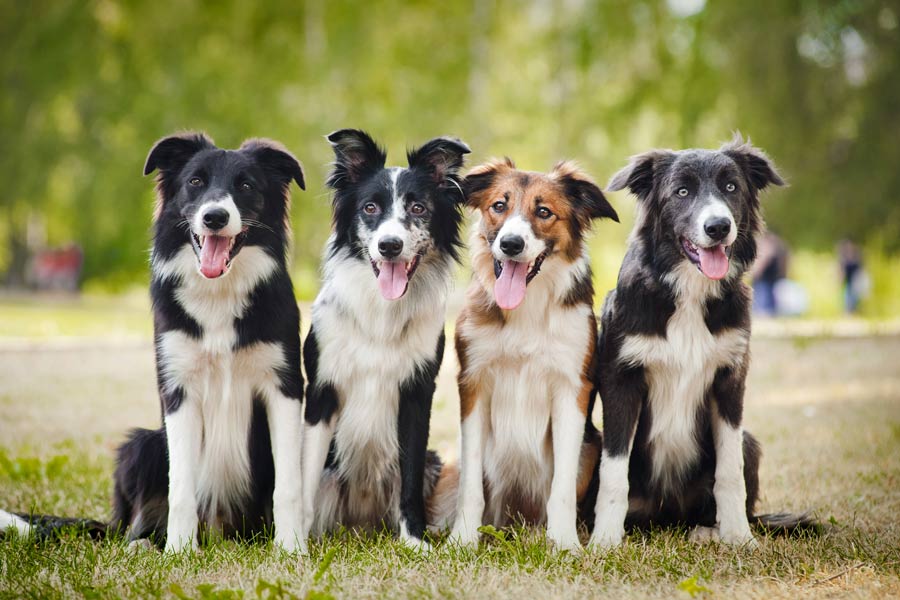
Sociability is a characteristic that the dog has maintained for thousands of years.
- development of hearing and smell: the two species share an extraordinary olfactory and auditory sensitivity, essential aspects for their survival. These senses allow them to identify prey, pack members and possible threats even at considerable distances. If you want to find out more about the dog’s ear canal, read our article about dog hearing.
- the diet: although domestic dogs have become accustomed to a different diet than that of wild wolves, the natural predisposition to consume meat is a point in common between the two species. The difference is that our four-legged friends can also feed themselves, sometimes for veterinary and health needs, exclusively on plant foods following a vegan diet;
- the predatory instinct: it belongs to both species, although domestic dogs no longer have to hunt for survival, in some cases they visibly show characteristics typical of their natural aptitude, for example during play, or in specific activities for which they have been trained such as for grazing.
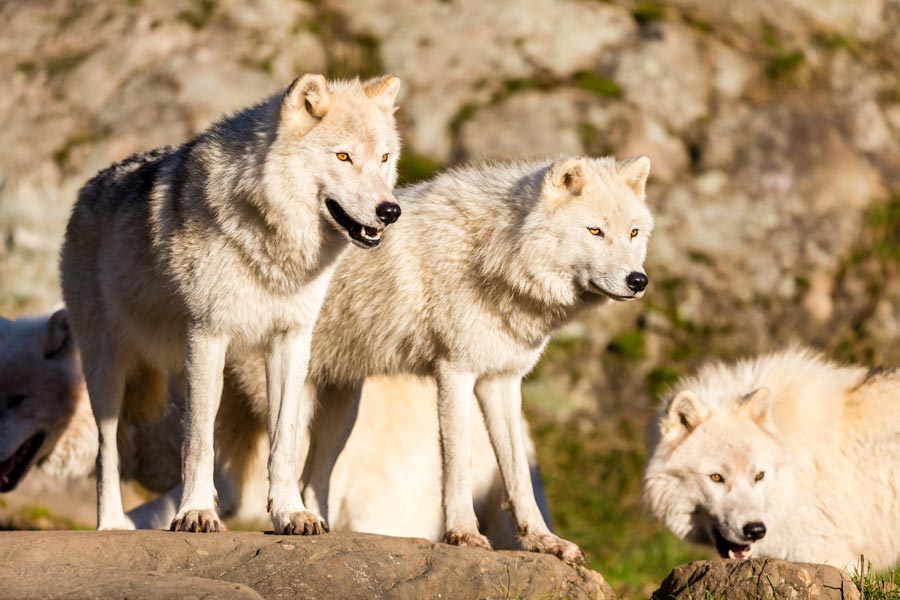
What did these little wolves see?
It seems evident that there are clear differences that reflect the different evolution of the two species. Among the main ones we find:
- Communication: domestic dogs have learnt to interact with humans and other members of their species using a wide range of vocal signals and more. Our beloved life companions, for example, are the only animals who have learnt to communicate with humans through their eyes to perceive and transmit emotions. Wolves, however, do not bark: they tend to howl and yelp, using specific vocalizations to communicate with each other even over very long distances;
- The ears: the wolf’s ears have precise characteristics, they are small, always erect and typically triangle-shaped. In dogs, however, the shape and size of ears vary from breed to breed;
- The tail: unlike dogs, who use their tails as a communication tool according to its position (resting, high, between the legs), wolves tend to keep it in a relaxed position most of the time. Except when they are happy: they don’t know how to keep it under control and they allow themselves to wildly wag their tails just like cute dogs!
- The gait: all wolves walk in the same way, bringing their hind legs to follow the footprint left by their front legs, thus forming a regular and linear trace on the ground. Domestic dogs, on the other hand, do not have a regular gait and walking style, therefore leaving less regular traces.
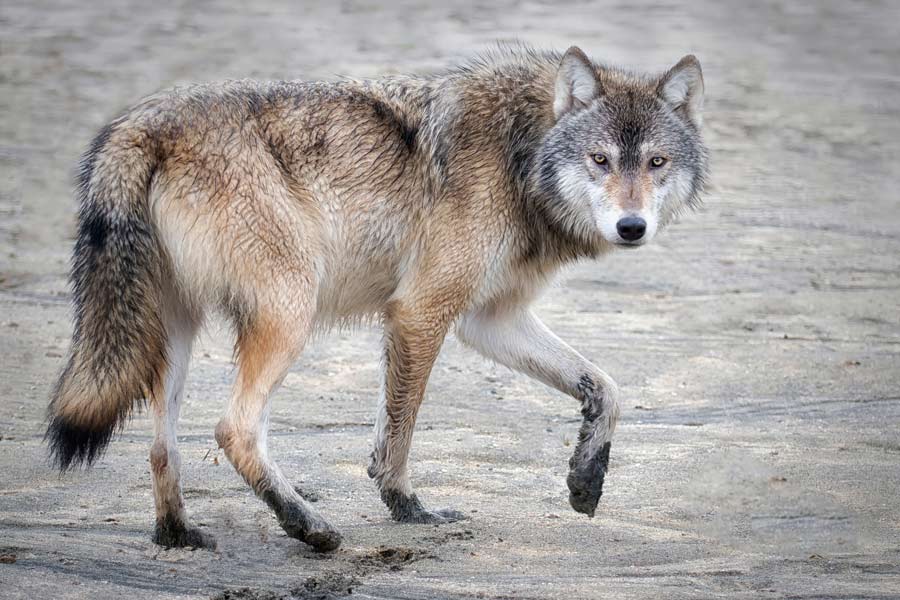
The wolf is an incredible example of elegance and composure.
Five dog breeds similar to their wolf ancestors
It is known that some dog breeds have kept characteristics similar to those of their wolf ancestor. These similarities not only fascinate dog lovers but are also the subject of analysis for scientists, who still study the evolutionary dynamics of the animal world today.
Among the breeds with greater similarities to wolves, in terms of aesthetics and attitude, we find:
Saarloos Wolfdog
It is a breed born in the twentieth century, in the early 1930s, from the cross between a male utility German Shepherd and a female wolf of Siberian/European origin. Initially, they were guide dogs for blind people. Later, through reintroductions of wolf DNA they became unsuitable for any type of work, remaining a valid and faithful companion dog breed.
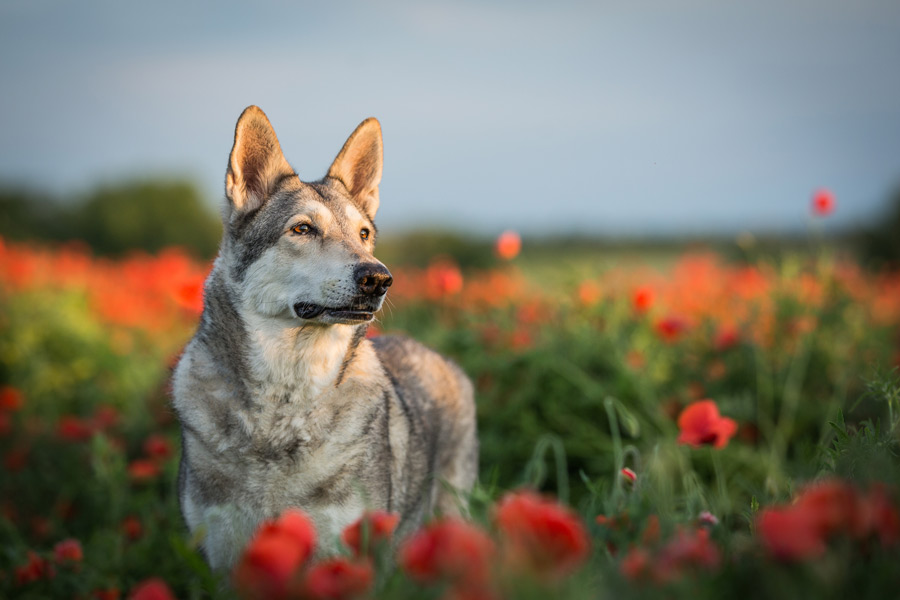
The Saarloos Wolfdog is one of the species who mostly look like his wilds ancestors.
Czechoslovakian Wolfdog
A breed born in 1955 from a careful and selected cross between 48 specimens of working German shepherd dogs and 4 Carpathian wolves. The purpose was to obtain a strong animal, with a solid temperament but at the same time trainable. In short, a big dog with the appearance and the style of a wolf. A breed now very widespread among us, on some occasions precisely because of his obvious similarities, it has happened to mistake the Czechoslovakian Wolfdog for a real Wolf.
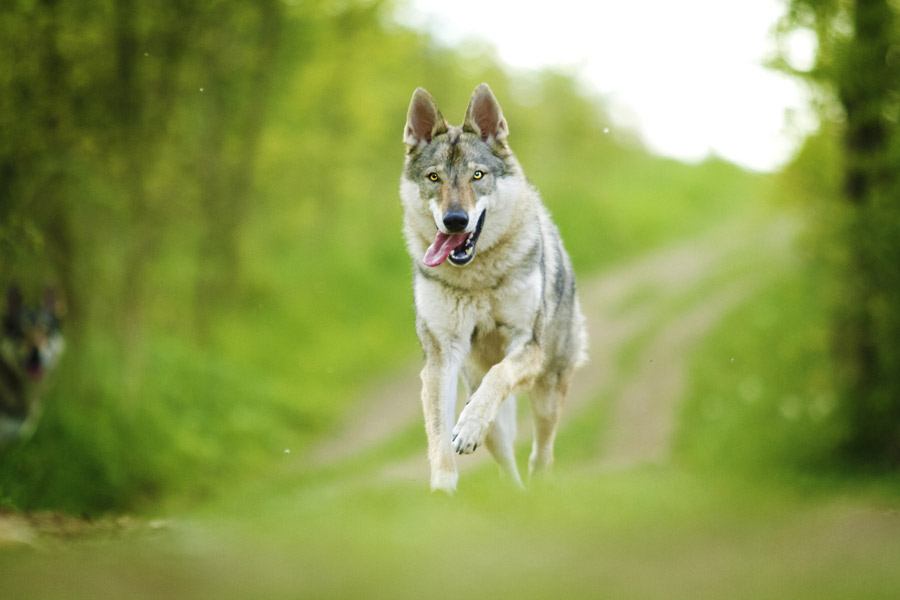
In the middle of nature, the Czechoslovakian Wolfdog definitely feels at home!
Siberian Husky
Selected from dogs who were bred for centuries by the Chukchi people of Siberia at the beginning of the 20th century, this breed was recognized only in 1930. The Husky was structurally born for important physical efforts such as sledding.
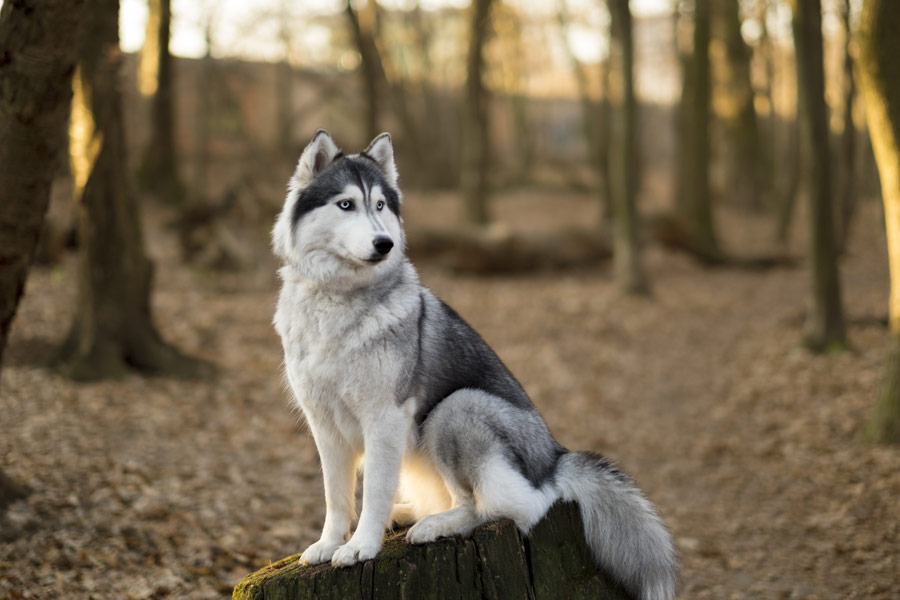
The perfect picture? A stunning specimen of Siberian Husky surrounded by the forest.
German Shepherd
Also called police dog, due to his historical association with the police as a search dog, these specimens are also recognized for their remarkable intelligence. The first recognized example of a German Shepherd dates back to 1899 and his physical structure shows some characteristic features of the wolf: the long but very sturdy body, strong and resistant legs and the shape of the face with a long nose.
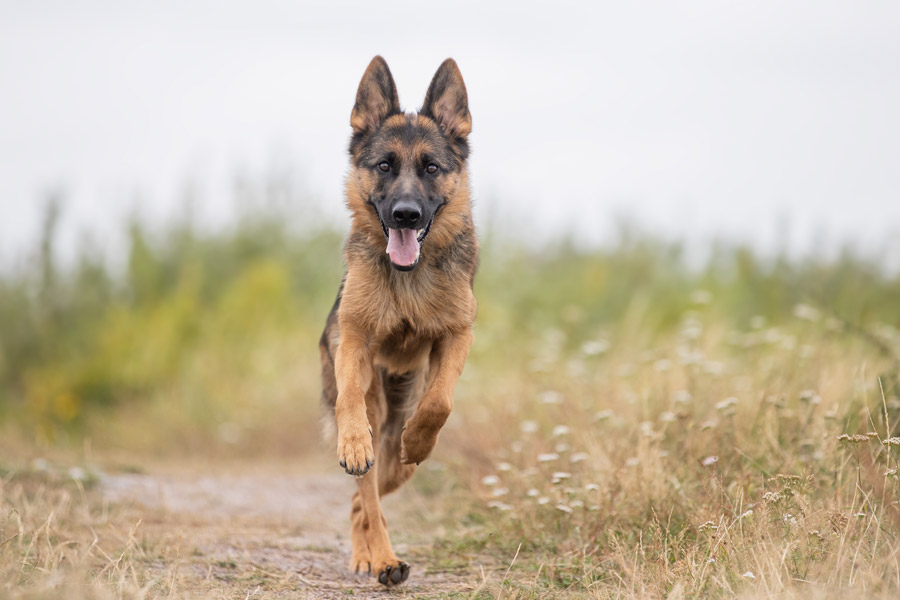
Power and composure are two features of this lovely German Shepherd
Belgian Shepherd Dog
A breed born at the end of the 19th century, which is actually divided into four varieties: Groenendeael, Laekenois, Malinois and Tervueren. His ancestors were sheep dogs. The Belgian Shepherd was born as a guard and defense dog, he is a truly graceful specimen as well as strong and sturdy. That’s why he’s now an auxiliary to the police and rescue forces. He too, like the German Shepherd, has somatic traits similar to the Wolf.
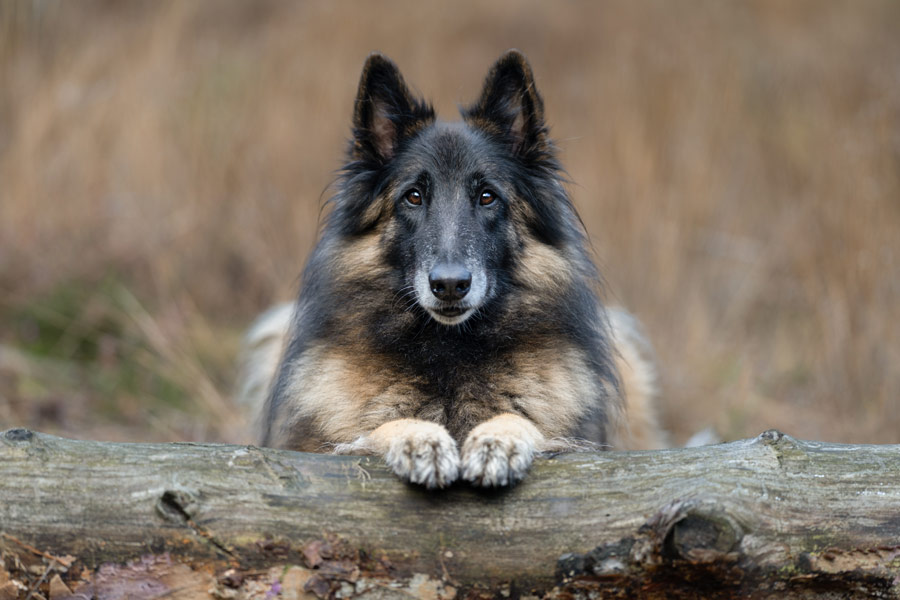
Control and defense are two specific characteristics of the Belgian Shepherd Dog.
The evolution of from wolf to dog is an extraordinary story of adaptation, cooperation and connection between human and dog. It reminds us that, since thousands of years, humans and dogs have been two species extremely connected, supporting each other in a sort of symbiosis in everyday life. And, in effect, by looking at our faithful companion we can easily realize the similarities of adaptation and change, thus recognizing the immeasurable value of a relationship that has been able to withstand time.
Article written with the consultancy of Chiara Festelli, Dog Trainer.




